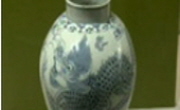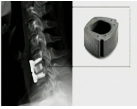This study aims to investigate the design factor for introduction of a biocover process to reduce odor emission by determining and evaluating the performance of ceramic media for odor removal. First, an analysis of material properties of the cerami...
http://chineseinput.net/에서 pinyin(병음)방식으로 중국어를 변환할 수 있습니다.
변환된 중국어를 복사하여 사용하시면 됩니다.
- 中文 을 입력하시려면 zhongwen을 입력하시고 space를누르시면됩니다.
- 北京 을 입력하시려면 beijing을 입력하시고 space를 누르시면 됩니다.
부가정보
다국어 초록 (Multilingual Abstract)
This study aims to investigate the design factor for introduction of a biocover process to reduce odor emission by determining and evaluating the performance of ceramic media for odor removal.
First, an analysis of material properties of the ceramic media was carried out to evaluate its performance. Inorganic elements of ceramic media obtained by EDS analysis showed O(oxygen) was the highest proportion at 57.88 percent, followed by Si(silicon), Al(aluminum), and Na(sodium). At this point, through BET analysis, the specific surface area, the total pore volume and the mean pore diameter were checked to be 13.164 m2/g, 0.04409 cm3/g and 13.397 nm, respectively.
Second, the adsorbed amount and adsorption capacity for gaseous ammonia and toluene were determined in order to evaluate the performance of the ceramic media. Under the condition of gaseous ammonia, the average value of the adsorbed amount and adsorption capacity were calculated to be 14.2355 mg and 0.1015 mg NH3/g ceramic, respectively. Under the condition of gaseous toluene, the average value of the adsorbed amount and the adsorption capacity were calculated to be 10.9272 mg and 0.0781 mg Toluene/g ceramic, respectively.
Third, biological degradation capability for ammonia and toluene was determined through biological experiment in order to evaluate the performance of the ceramic media. Under gaseous ammonia condition, biological degradation capability was determined to be 13 g/m3·hr in Trickling biofilter and 6.5 g/m3·hr in Biofilter. Under the condition of toluene condition, biological degradation capability was determined to be 20 g/m3·hr in Trickling biofilter and 30 g/m3·hr in Biofilter.
In addition, after the adsorption and biological experiments, changes in the ceramic media were determined by analyzing the surface of the ceramic media. The analysis of the surface of the ceramic media by SEM after the adsorption and biological experiments showed that it was relatively rougher than the raw ceramic. The ceramic media that had undergone a biological experiment was observed to be rough due to the attachment and growth of microbes on the surface of media, and this was confirmed through the EDS analysis.
Components unidentified in the existing media were observed on the surface of media used in Trickling biofilter and Biofilter, and under the conditions of ammonia P(phosphorus) were observed in a biological experiment and under the conditions of toluene, C(carbon) were observed in a biological experiment
Low-concentration and high-volume odor is continuously generated although odor is carried out to odor management through odor control facilities in environmental foundational facilities such as raw waste and food waste composting facilities, sewage treatment facilities and excrements disposal facilities. Thus, This study aims to suggest introduction possibility of a bio-cover technology applying ceramic media to manage Low-concentration and high-volume odor generated by final outlet of environmental foundational facilities at low cost. the adsorption capacity and the attachment capacity of microbes, obtained in this study, can be used as basic data for future process design.
국문 초록 (Abstract)
본 연구는 악취에 제거를 위한 세라믹 담체의 성능을 파악하고 이를 평가하여 악취 배출 저감을 위한 바이오커버의 공정을 도입하기 위해 설계인자를 도찰하고자 하였다. 세라믹 담체의 ...
본 연구는 악취에 제거를 위한 세라믹 담체의 성능을 파악하고 이를 평가하여 악취 배출 저감을 위한 바이오커버의 공정을 도입하기 위해 설계인자를 도찰하고자 하였다.
세라믹 담체의 성능을 평가하기 위하여 첫 번째로 세라믹 담체의 물성분석을 실시하였다. EDS분석을 통해 얻은 세라믹 담체의 표면 성분은 O(산소)가 57.88%로 가장 높았으며, Si(규소), Al(칼륨), Na(나트륨) 순으로 나타났다. 이때 BET 분석을 통해 비표면적, 총 기공의 부피 그리고 평균 기공 직경을 확인하였으며, 각각 13.164 m2/g, 0.044 cm3/g 그리고 13.397 nm로 확인되었다.
세라믹 담체의 성능을 평가하기 위하여 두 번째는 가스상 암모니아 및 톨루엔에 대한 흡착량 및 흡착능력을 파악하였다. 가스상 암모니아 조건에서 흡착량 및 흡착능의 평균값은 각각 14.236 mg과 0.102 mg NH3/g ceramic로 계산되었다. 가스상 톨루엔 조건에서 흡착량 및 흡착능의 평균값은 10.927 mg과 0.078 mg Toluene/g ceramic로 계산되었다.
세라믹 담체의 성능을 평가하기 위하여 세 번째는 생물학적 실험을 통하여 암모니아 및 톨루엔에 대한 생물학적 분해능력을 확인하였다. 가스상 암모니아 조건에서 생물학적 분해능은 Trickling biofilter에서 13 g/m3·hr 그리고 Biofilter에서 6.5 g/m3·hr로 확인되었다. 가스상 톨루엔의 경우 Trickling biofilter의 생물학적 분해능은 20 g/m3·hr 그리고 Biofilter는 30 g/m3·hr로 확인되었다.
또한 흡착 및 생물학적 실험 후 세라믹 담체 표면을 분석함으로써 세라믹 담체의 변화 정도를 확인하였다. SEM 분석을 통해 세라믹 담체 표면을 분석한 결과 기존 세라믹 보다 흡착 및 생물학적 실험을 진행 시킨 후 세라믹 담체의 표면이 상대적으로 더 거친 표면이 확인되었다. 생물학적 실험을 실시한 세라믹 담체의 경우 담체 표면에 미생물의 부착 및 성장으로 거칠게 관찰되었으며, 이는 EDS 분석을 통해 확인할 수 있었다. Trickling biofilter와 Biofillter에 사용된 담체의 표면에서는 기존 담체에서 확인되지 않은 성분이 확인되었으며, 암모니아 조건에서의 생물학적 실험에서는 P(인) 성분이, 톨루엔 조건에서의 생물학적 실험에서는 C(탄소) 성분이 확인되었다.
생활폐기물 및 음식물 폐기물 처리시설, 하수처리시설, 분뇨처리시설 등과 같은 환경기초시설은 악취방지시설을 통해 악취관리를 실시하고 있지만, 저농도의 악취가 지속적으로 발생하고 있다. 따라서 본 연구는 환경기초시설의 최종배출구에서 발생되는 저농도, 고유량의 악취를 저비용으로 관리하고자 세라믹 담체를 적용한 바이오커버 기술 도입가능성을 제시하고자 하였으며, 본 연구에서 도출된 담체의 흡착성능 및 미생물 부척성능은 향후 공정설계를 위한 기초자료로 활용될 수 있다.
목차 (Table of Contents)
- 요 약 i
- 표 목 차 iii
- 그림목차 iv
- I. 서 론 1
- 1. 연구 필요성 1
- 요 약 i
- 표 목 차 iii
- 그림목차 iv
- I. 서 론 1
- 1. 연구 필요성 1
- 2. 연구 목적 3
- II. 이론적 배경 4
- 1. 생물학적 처리기술 4
- 1) 생물학적 처리기술의 원리 4
- 2) 생물학적 처리기술의 종류 7
- 3) 생물학적 처리기술의 담체 종류 10
- 2. 바이오커버 11
- 1) 바이오커버 원리 11
- 2) 바이오커버 종류 12
- 3) 바이오커버용 담체의 종류 14
- III. 연구내용 및 연구방법 15
- 1. 실험재료 15
- 1) 반응기 제작 15
- 2) 세라믹 담체 15
- 2. 실험조건 16
- 1) 악취 가스 공급 16
- 2) 세라믹 담체의 흡착 실험 17
- 3) 세라믹 담체의 생물학적 분해 실험 19
- 3. 분석조건 24
- 1) 가스상 물질 분석 24
- 2) 기타 분석방법 26
- 4. 세라믹 담체의 활용 27
- IV. 연구결과 및 고찰 29
- 1. 세라믹 담체의 물성분석 29
- 2. 선택적 흡착능 30
- 1) 암모니아 가스에 대한 흡착능 30
- 2) 톨루엔 가스에 대한 흡착능 32
- 3. 생물학적 분해능 34
- 1) 암모니아 가스의 분해능 34
- 2) 톨루엔 가스의 분해능 42
- 4. 세라믹 담체의 표면특성 51
- 1) 암모니아 실험에 사용된 세라믹 담체의 표면특성 51
- 2) 톨루엔 실험에 사용된 세라믹 담체의 표면특성 53
- 5. 세라믹 담체의 활용 55
- V. 결 론 57
- 참고문헌 59
- 영문요약(Abstract) 67












